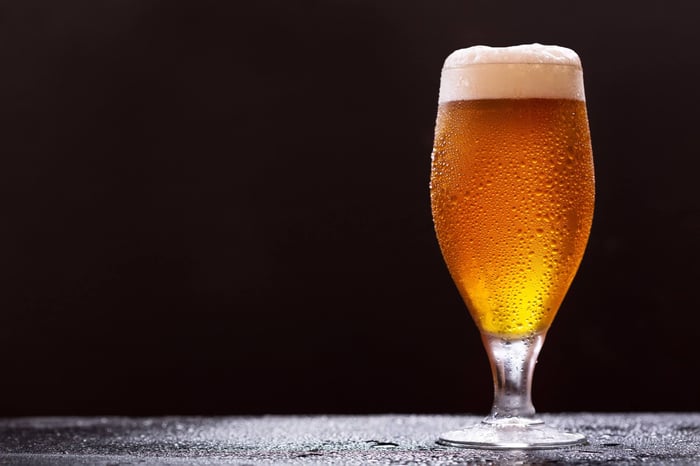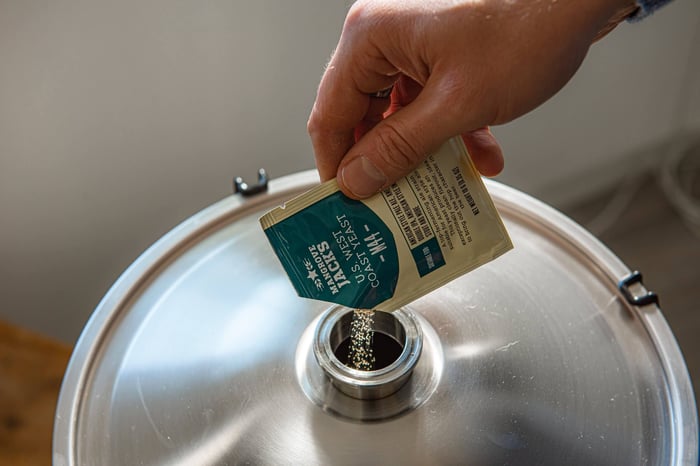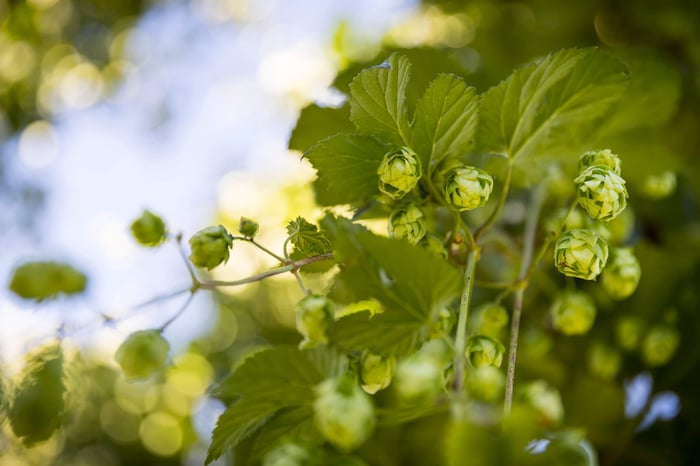Every brewer's journey includes those moments when a carefully crafted beer doesn't quite hit the mark. Perhaps your Belgian-style ale tastes more like cider, or your German lager carries unwanted butterscotch notes. These brewing faults, whilst frustrating, are actually valuable teachers that help refine your technique.
Understanding and preventing common brewing faults separates good brewers from great ones. The encouraging news is that most issues stem from a handful of preventable causes, and once you master the fundamentals, consistent quality becomes achievable.
Essential Brewing Principles for Fault Prevention
Excellence in brewing begins with mastering these core principles. Each plays a crucial role in producing clean, characterful beer:
Impeccable Sanitation Standards
Proper cleaning and sterilisation cannot be overstated. Every piece of equipment that contacts your beer post-boil must be thoroughly sanitised. This includes fermenters, siphons, bottles, and sampling equipment.
Yeast Health and Vitality
Your yeast colony determines fermentation success. Liquid yeast requires a proper starter culture, whilst dry yeast needs careful rehydration. Always verify yeast viability dates and storage conditions.
Wort Oxygenation Protocol
Adequate dissolved oxygen levels are essential for healthy yeast metabolism. Whether using vigorous agitation or dedicated oxygenation equipment, ensure your cool wort receives proper aeration.
Precise Temperature Control
Each yeast strain performs optimally within specific temperature ranges. Consistent temperature management throughout fermentation prevents many common faults.
Comprehensive Off-Flavour Analysis
Q: What causes that harsh apple-like taste in my lager?
A: Acetaldehyde Formation
This sharp, green apple character indicates incomplete fermentation. Acetaldehyde represents an intermediate compound that should convert to ethanol during proper fermentation.
Identification: Ranges from tart green apple to cidery notes, occasionally progressing to rotten apple aromas in severe cases.
Prevention strategies:
- Ensure adequate yeast pitching rates, particularly for high-gravity brews
- Maintain optimal fermentation temperatures
- Provide sufficient dissolved oxygen pre-fermentation
- Allow complete fermentation before packaging
- Address sanitation issues if detecting rotten apple notes
Q: Why does my pale ale taste like buttered toast?
A: Diacetyl Retention
This buttery, sometimes butterscotch-like flavour results from incomplete diacetyl reduction. Whilst acceptable in certain English ales, most styles should exhibit minimal diacetyl presence.
Occurrence factors: Stressed yeast, inadequate fermentation time, temperature fluctuations, or insufficient yeast populations.
Corrective measures:
- Provide yeast nutrients for challenging fermentations
- Maintain steady fermentation temperatures
- Implement diacetyl rests for lager production
- Ensure adequate fermentation duration
- Avoid temperature shock during yeast pitching
Q: My wheat beer tastes overly fruity – is this normal?
A: Excessive Ester Production
Ester compounds create fruity aromatics ranging from banana and pear to floral notes. Whilst desirable in Hefeweizen and some Belgian styles, excessive ester production can overwhelm other beer styles.
Management approach:
- Lower fermentation temperatures to reduce ester formation
- Increase yeast pitching rates
- Ensure proper wort aeration
- Consider yeast strain selection – American strains typically produce fewer esters than European varieties
Q: What creates spicy, medicinal flavours in beer?
A: Phenolic Compound Development
Phenolic compounds contribute spice-like characteristics including clove, cinnamon, and nutmeg notes. Whilst integral to styles like Saison and Hefeweizen, unwanted phenolic development creates medicinal or plastic-like off-flavours.
Common sources: Chlorinated water supplies, specific yeast strains, or bacterial contamination.
Prevention protocols:
- Test and treat brewing water to remove chlorine compounds
- Select appropriate yeast strains for your target style
- [LINK: Mangrove Jack's Craft Series Yeasts] offers excellent European-style options
- Maintain strict sanitation standards
Q: How do I eliminate harsh, alcoholic heat in my strong ales?
A: Fusel Alcohol Control
Higher alcohols (fusel alcohols) create harsh, solvent-like characteristics that overpower beer's intended flavour profile. These compounds form during stressed fermentation conditions.
Primary cause: Elevated fermentation temperatures, particularly in high-gravity brews.
Control measures:
- Implement precise temperature control throughout fermentation
- Consider step-feeding high-gravity fermentations
- Ensure adequate yeast populations for alcohol tolerance
- Extended conditioning periods help integrate fusel alcohols
Q: Why does my Pilsner taste like sweetcorn?
A: Dimethyl Sulphide (DMS) Issues
DMS creates vegetable-like or sweetcorn aromatics, particularly problematic in light-coloured lagers where the flavour becomes readily apparent.
Formation mechanism: S-methylmethionine (SMM) in pale malts converts to DMS during mashing. Vigorous boiling typically removes DMS, but inadequate boiling or slow cooling allows accumulation.
Elimination techniques:
- Maintain vigorous, uncovered boiling for minimum 60 minutes
- Avoid covering the kettle during boiling
- Implement rapid wort cooling post-boil
- Minimise hot wort storage time
Q: What causes vinegar-like sourness in non-sour beers?
A: Acetic Acid Contamination
Sharp, vinegar-like acidity indicates bacterial contamination, typically from acetobacter or other wild organisms. Unfortunately, contaminated batches cannot be salvaged.
Prevention remains key:
- Implement rigorous sanitation protocols
- Avoid exposing fermenting beer to atmospheric oxygen
- Maintain closed fermentation systems
- Replace worn or scratched plastic equipment
Professional Brewing Insights
European brewing traditions emphasise process consistency and quality ingredients. Many Continental breweries maintain the same recipes and techniques for generations, proving that mastering fundamentals creates consistently excellent beer.
Consider how German Purity Law (Reinheitsgebot) restrictions force brewers to achieve flavour complexity through technique rather than adjuncts. This constraint actually improves brewing skills by demanding precision in mashing, fermentation, and conditioning.
Similarly, Belgian brewing traditions demonstrate how controlled fermentation environments create distinctive flavour profiles. Their monastery breweries often ferment in stone cellars with naturally stable temperatures – a reminder that environmental control significantly impacts final beer character.
Building Your Brewing Excellence
Developing palate sensitivity for off-flavours requires practice and patience. Consider organising tasting sessions with fellow brewers, comparing notes on flavour identification and potential causes. Many European homebrew clubs regularly conduct fault identification workshops.
Keep detailed brewing records documenting ingredients, temperatures, timing, and final beer characteristics. This documentation proves invaluable when troubleshooting issues or replicating successful batches.
Remember that even experienced brewers occasionally produce flawed beer. The difference lies in their systematic approach to identifying causes and implementing preventive measures. Each brewing session offers opportunities to refine your technique and deepen your understanding of the process.
Got questions on off flavours - get in touch - we're always up for a proper brewing discussion!
Grainfather Team










